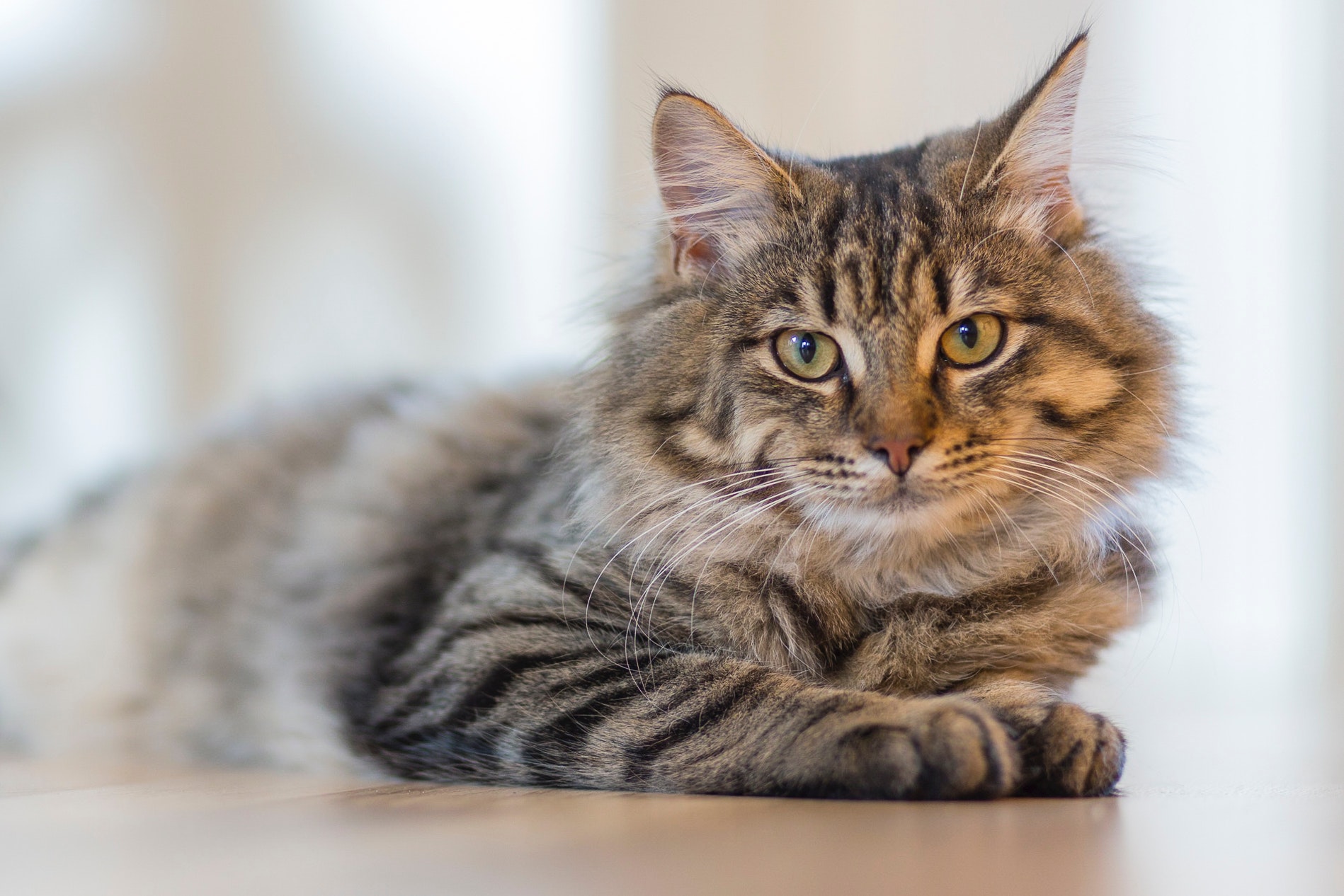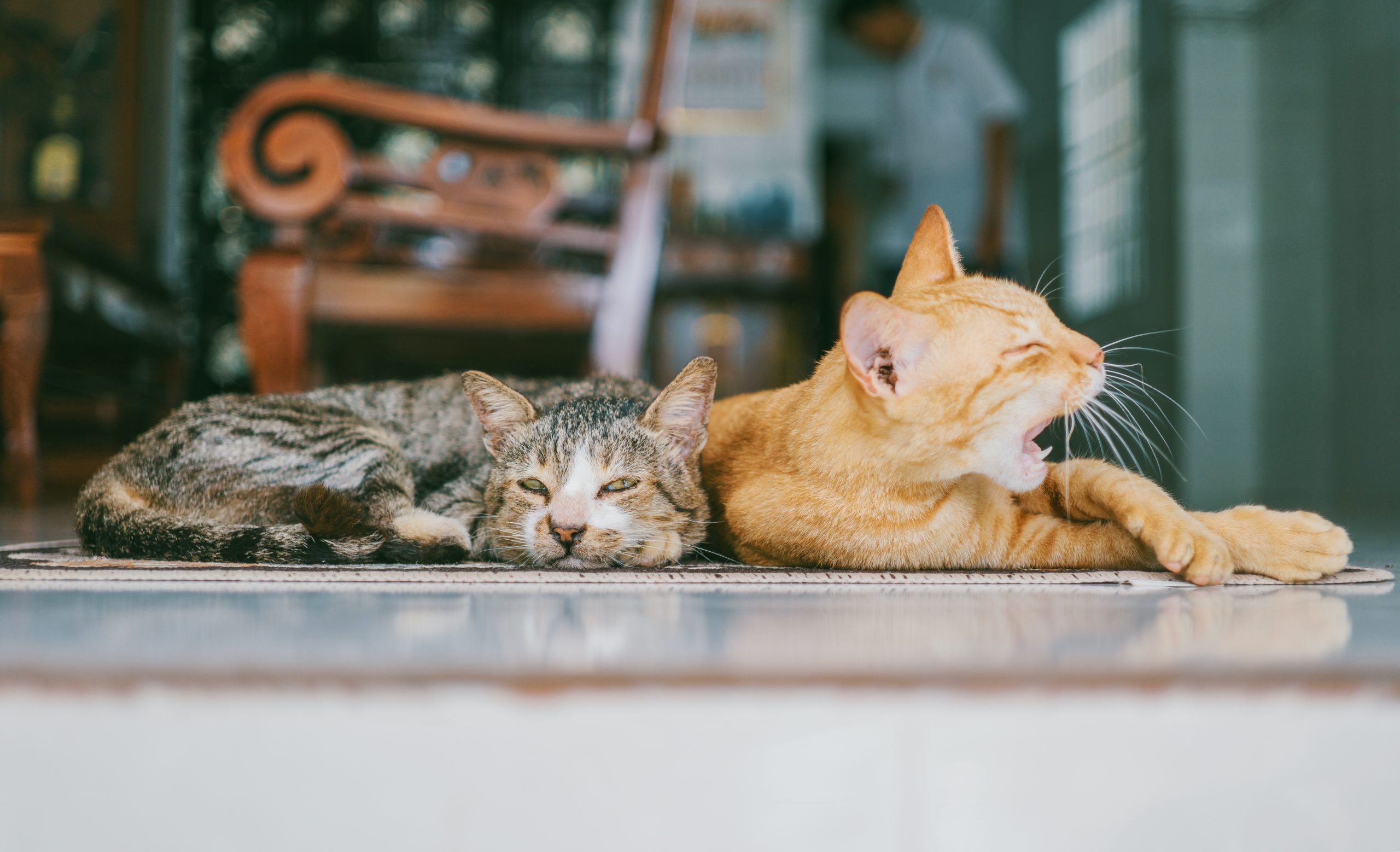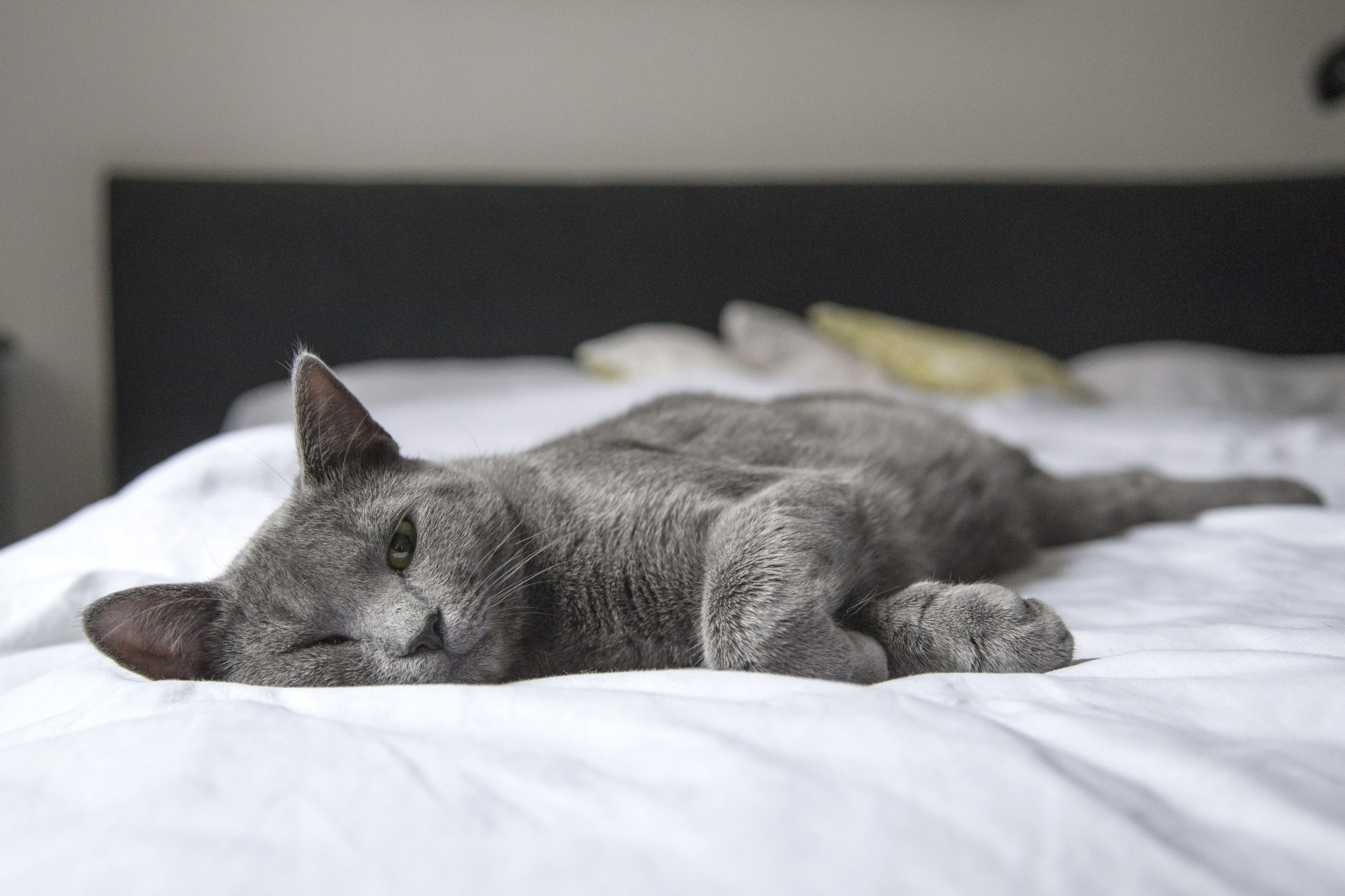For most cats and their owners, a trip to the vet is a stressful event. This may involve chasing your cat around the house, grabbing it with a towel and quickly trying to get it into the cat carrier before a claw, or the entire cat, escapes!
Once in the car the awful yowls, and emptying of the bladder and bowels, make it even more unpleasant for both parties. For the vet, trying to examine a stressed cat can also be painful and not very conducive to determining the cat’s ‘normal’ state, any medical problems or performing any further tests. Once agitated, it can take a cat a long time to calm down and it will look forward to the next visit even less.
So, how can we turn this into a more tolerable, even pleasant, situation for you and your cat?
1. Train your cat to love its carrier
You can train your cat to love its travel carrier in a short time by associating it with meals and yummy treats. Firstly, purchase a solid carrier that has a front-door opening. Put the carrier in the room where your cat sleeps or spends most of its indoor time and leave the carrier door open. Put your cat’s meal near the carrier to start with and gradually move it closer as your cat becomes comfortable with its presence. Eventually you can move the bowl to just inside the carrier and then further in once it readily goes inside to eat. Voila! The carrier is now a good place to be in.
2. Train your cat to love car rides
Once your cat is happy to go in the carrier, the next step is to train her to be relaxed in the car. Pick a time when your cat is expecting her next meal and place a treat in the carrier. Once she goes in willingly you can close the door and place the carrier in the car. You can then place her meal in the carrier with her. Anxious cats won’t eat and if this is the case, its time to take her back inside. Keep trying each day until she is comfortable enough to eat her treats or a meal in the car. Once this occurs, you can then start to go on short trips (around the block), preferably while she’s eating so she’s distracted. Come straight home and return her to the house.
3. Train your cat to be wrapped up
You can train your cat to love being wrapped in a blanket or towel. This is important because your veterinarian may use a towel to help restrain your cat in a comfortable manner. Again, we approach this slowly by associating the towel with treats and meals.
Simply place your cat on a towel on your lap and offer her some favourite treats. If she’s happy with this, you can slowly bring up the edges of the towel to enclose her and offer further treats. With cats its important to go slowly and to stop once she is struggling, as further engagement will only make your cat more anxious.
4. Train your cat to enjoy being handled
Some cats have a short handling span – that is, you can only get a few pats in before a warning swipe or bite! You can train your cat to enjoy it more by associating touching and handling with treats. This can help your vet to give her injections, examine her skin and ears as well as being groomed.
Offer treats such as BBQ chicken pieces, sardines or a small tin of cat food and when the cat starts tarts licking the food, lightly handle its skin for a few seconds. Then stop handling and remove the food at the same time so it’s clear that the two are associated. Repeat this process after around 5 seconds and repeat. Go slowly and stop handling before your cat becomes uncomfortable and stops eating. Once she does appear relaxed at that level then you can gradually try handling her a little more vigorously (but not roughly).
5. Use calming pheromones
You can use Feliway© spray on your cat’s carrier, towel and collar. Feliway contains a synthetic version of the pheromone found in the facial glands of cats and can have a calming effect. When using the spray, apply it to her towel or directly onto the carrier 20 minutes before the cat will be transported in the carrier. You can also spray it on your hands before handling your cat.
A Feliway Diffuser can be plugged into a power point in your cat’s room in the house (preferably near the carrier) and it slowly releases the calming pheromone over a 30 day period.
6. Make the vet visit a positive experience
Make an appointment with your vet at a time when there are not likely to be dogs present. You can ring beforehand to check what animals are in the waiting room or arrange to come directly to the consult room via a back door. Alternatively, ask for a staff member to notify or collect you when the area is safe and you can wait outside or in the car until then.
Once you are ready to go into the vet clinic you can place a towel over the carrier for added security.
7. In the consult room
Once in the consult room, you can place the carrier on the exam table. Preferably the table, or a towel on the table, has already been sprayed with Feliway spray or there is a Feliway diffuser functioning in the room. Open the carrier door so your cat can come out on her own. If not, don’t drag or dump her out, you can simply take the carrier lid off and lift her gently out wrapped in her towel.
Have some of your cat’s favourite treats on hand to distract her while she is being examined, or even a toy or just stroking and calming words if she is not interested in food. Gently place her back in the carrier when the examination is finished and cover it with a towel.
Ensure the reception area is quiet or leave the cat and carrier in the consult room until it is clear and you are ready to leave. You want the the visit to end in a pleasant way so all that good work is not undone!
8. Reintroducing your cat back home
If you have another cat or cats at home you don’t want to let your returning cat out straight away. This is because she will smell different from being at the vet clinic and is akin to introducing a stranger into the house initially.
So, you need to reintroduce your cats slowly and safely. Firstly, provide a mutual scent by rubbing each cat with a towel, swap and rub each cat with the other towel. Then, leave a towel with each of the cats. Either let the resident cat/s sniff the returning cat through the carrier door or release your cat out of her carrier in a separate room where they can see each other through a window or door.
Open the carrier or door to the other room when both cats appear relaxed and uninterested in each other and no hissing occurs.
With each visit to the vet your cat should become less anxious and even relaxed about heading off on the next car trip. For serious anxiety problems, your vet may consider anti-anxiety medication as part of a behaviour modification plan, or on an as-needed basis prior to stressful events like a car trip or a vet or grooming visit.



